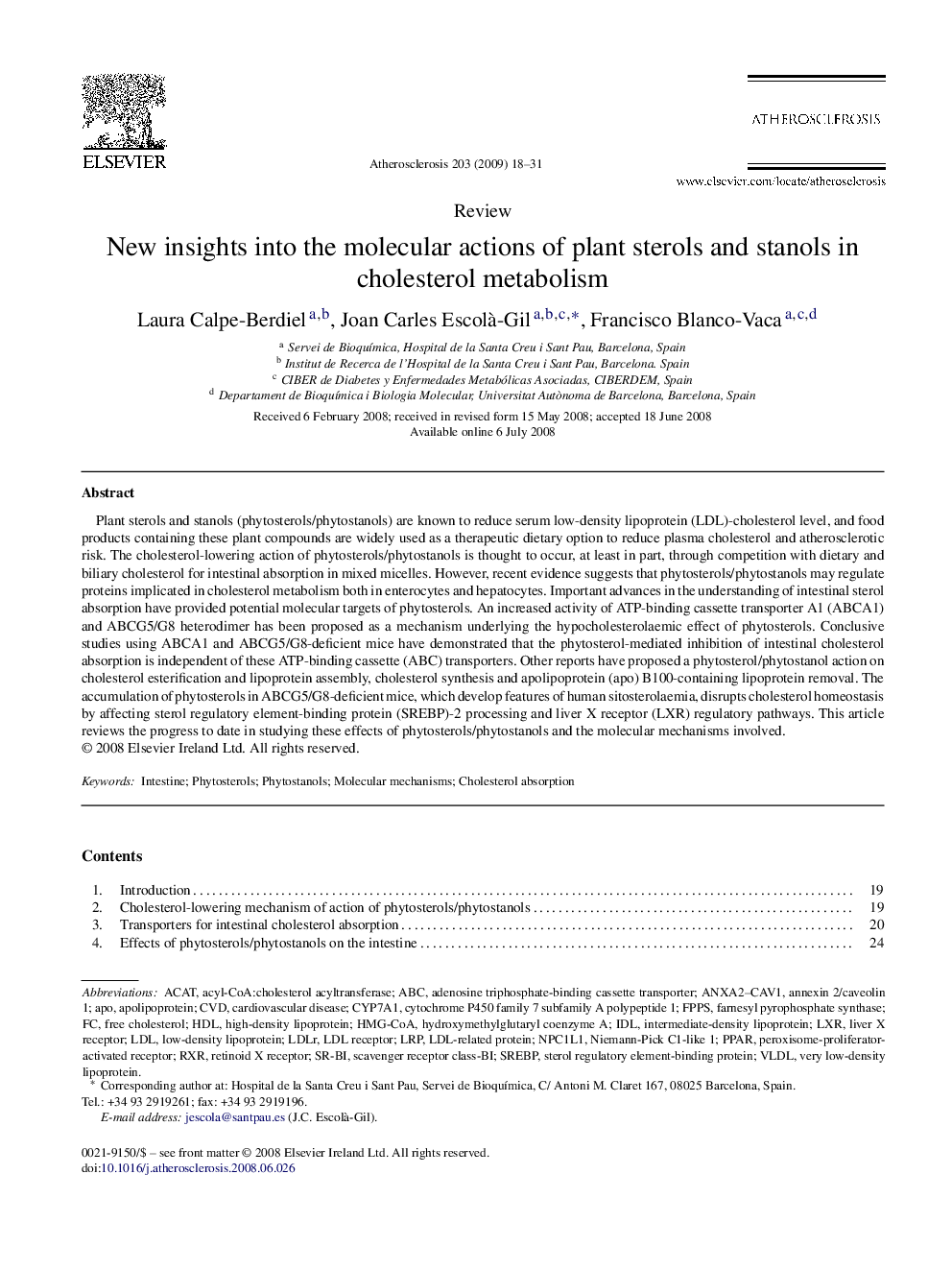| Article ID | Journal | Published Year | Pages | File Type |
|---|---|---|---|---|
| 5951460 | Atherosclerosis | 2009 | 14 Pages |
Abstract
Plant sterols and stanols (phytosterols/phytostanols) are known to reduce serum low-density lipoprotein (LDL)-cholesterol level, and food products containing these plant compounds are widely used as a therapeutic dietary option to reduce plasma cholesterol and atherosclerotic risk. The cholesterol-lowering action of phytosterols/phytostanols is thought to occur, at least in part, through competition with dietary and biliary cholesterol for intestinal absorption in mixed micelles. However, recent evidence suggests that phytosterols/phytostanols may regulate proteins implicated in cholesterol metabolism both in enterocytes and hepatocytes. Important advances in the understanding of intestinal sterol absorption have provided potential molecular targets of phytosterols. An increased activity of ATP-binding cassette transporter A1 (ABCA1) and ABCG5/G8 heterodimer has been proposed as a mechanism underlying the hypocholesterolaemic effect of phytosterols. Conclusive studies using ABCA1 and ABCG5/G8-deficient mice have demonstrated that the phytosterol-mediated inhibition of intestinal cholesterol absorption is independent of these ATP-binding cassette (ABC) transporters. Other reports have proposed a phytosterol/phytostanol action on cholesterol esterification and lipoprotein assembly, cholesterol synthesis and apolipoprotein (apo) B100-containing lipoprotein removal. The accumulation of phytosterols in ABCG5/G8-deficient mice, which develop features of human sitosterolaemia, disrupts cholesterol homeostasis by affecting sterol regulatory element-binding protein (SREBP)-2 processing and liver X receptor (LXR) regulatory pathways. This article reviews the progress to date in studying these effects of phytosterols/phytostanols and the molecular mechanisms involved.
Keywords
SREBPSR-BIVLDLLXRRetinoid X receptorHMG-CoAPPARRXRACATLDLRNPC1L1HDLLRPIDLCYP7A1FPPSNiemann-Pick C1-like 1hydroxymethylglutaryl coenzyme AABCacyl-CoA:cholesterol acyltransferasehigh-density lipoproteinadenosine triphosphate-binding cassette transporterapoapolipoproteincardiovascular diseaseCholesterol absorptionCVDIntestinefarnesyl pyrophosphate synthasePhytosterolsPhytostanolsvery low-density lipoproteinIntermediate-density lipoprotein Low-density lipoproteinLDLMolecular mechanismsSterol regulatory element-binding proteinliver X receptorfree cholesterolLDL receptorPeroxisome-proliferator-activated receptor
Related Topics
Health Sciences
Medicine and Dentistry
Cardiology and Cardiovascular Medicine
Authors
Laura Calpe-Berdiel, Joan Carles Escolà -Gil, Francisco Blanco-Vaca,
